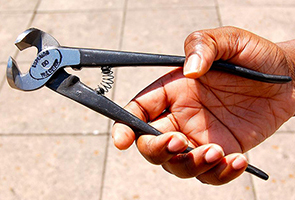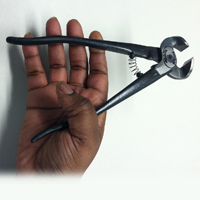Tile nippers (photo 1) and other "2-handled" tools (such as pliers, scissors, and caulking guns), are typically held in an open 'C' grip, then closed and re-opened. These types of hand tools usually involve closing and opening the handles many times, which can cause the hand to tire easily, particularly if the tool is not the right size for your hand, has a dull cutting edge, and/or is being used to cut a very hard material.



